We have been to Mexico several times but most of our travels have been along the coasts on our diving trips. After watching Rick Bayless’ Mexico: One Plate at a Time and Pati’s Mexican table on PBS, Mexico City seemed like an exciting place to visit.
“In Mexico City they will steal your underwear without taking off your pants. And when you reach for your phone to call the police, you will find you are speaking into a block of wood! City is full of crooks. Enjoy your holiday.” This was not exactly encouraging advice that we received from our building contractor from Guadalajara when we told him about our trip.
We read many travel blogs with lots of recommendations on restaurants to eat at, places to see, neighborhoods to visit, safety tips, and armed with all of this information, we set out to visit the city. Neither one of us really enjoy or seek city life, but something about CDMX (Ciudad de Mexico) intrigued us enough to plan a visit. We planned our 4 days in Mexico city around 4 different neighborhoods. Our home base was Hotel La Casona, a small boutique hotel in Roma Norte, a great location within walking distance of many of the key tourist destinations.
Day 1: Chapultepec
Some wise man once said- ‘The man who goes alone can start today; but he who travels with another must wait till that other is ready‘. We start our day late because the man had to wait for the other to get ready. Our hotel is within couple miles of Chapultepec park. Our first stop is to be the Museum of Anthropology. We walk through busy commercial streets passing crisp looking city folks headed to work. We try our best not to look like tourists just occasionally peeping at the map on our phones. We end up retracing our steps several times thus getting a good look at the neighborhood.
In abundance are dog walkers everywhere, with as many as 6 dogs in tow. Dog walking must be good business in Mexico City. As we reach Chapultepec Park, we see groups of dogs in all areas of the park playing under the watchful eye of their handlers. Chapultepec, also known as ‘Bosque the Chapultepec’ is one of the largest city parks in the world. As we interrupt our walk to play with some of the dogs – a grey colored great Dane lumbers up to me and leans in very much like our Moo. As other dogs approach, he shuffles closer trying to block them off.
We make our way to the National Museum of Anthropology, which is the largest and most visited museum in Mexico. It is a must-visit on all travel lists. The architecture of the museum is modern and impressive with the building enclosing a large central courtyard. A focal point of the courtyard is a tall waterfall that appears from a cantilevered canopy.
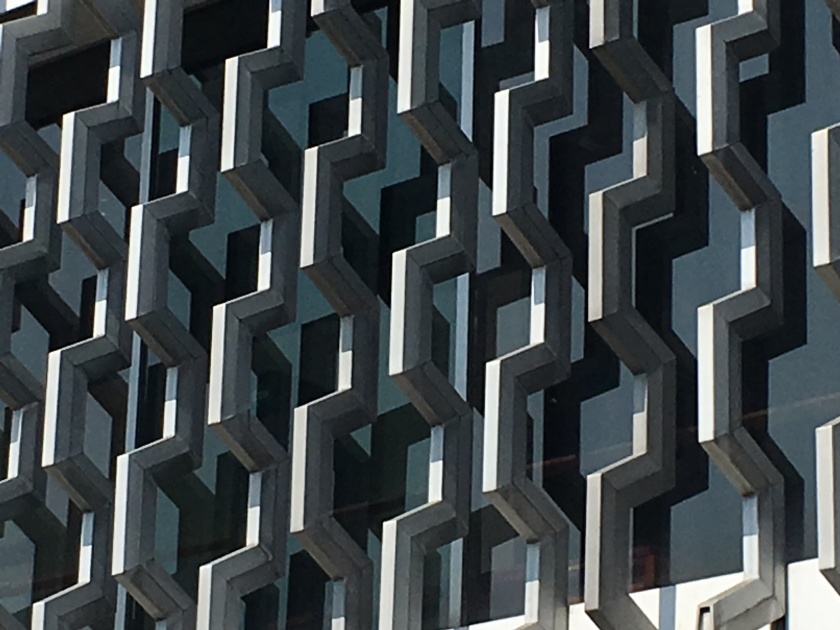
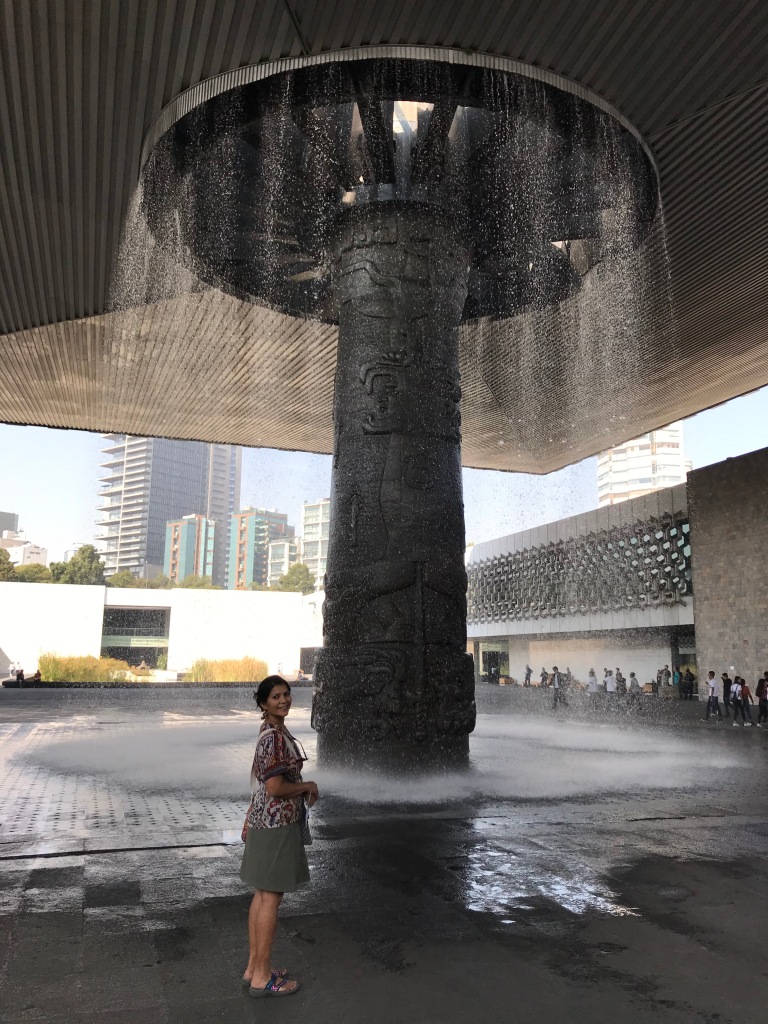
We buy our tickets and head straight to the café. It is located in a quiet corner of the museum on the lower level enclosed by walls covered in vines. Breakfast is Chilaquiles con Cecina for Sunil and Huevos with pumpkin flowers for me. The meal is excellent. We linger over coffee and then head to the auditorium for an English orientation to the museum.
The museum has a huge collection of archaeological and anthropological artifacts which are very well presented but can be overwhelming to non native speakers of Spanish. We don’t often visit museums on our travels, but are very impressed by this collection, the display and the architecture.
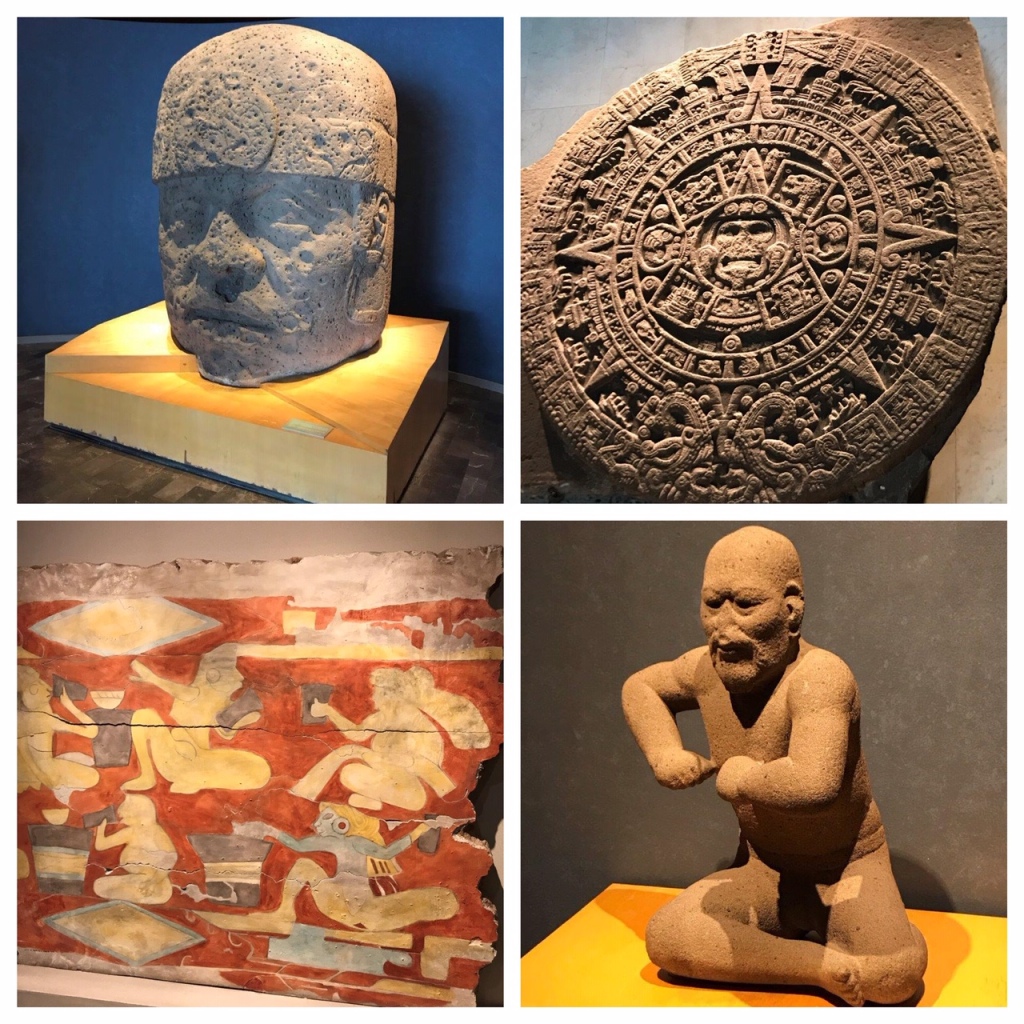
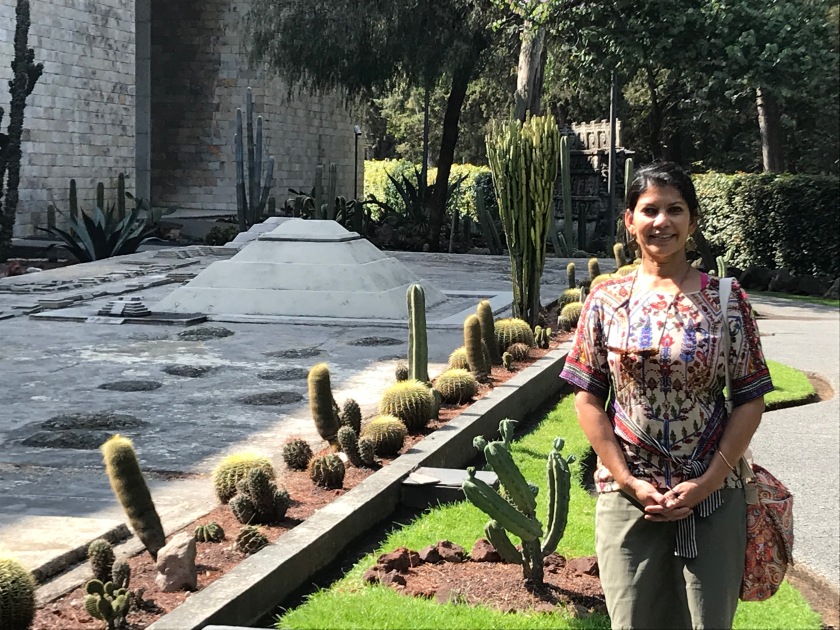
We take frequent breaks in the courtyard soaking up the sun and watch excited groups of school children on their school trips being herded by harried looking teachers.
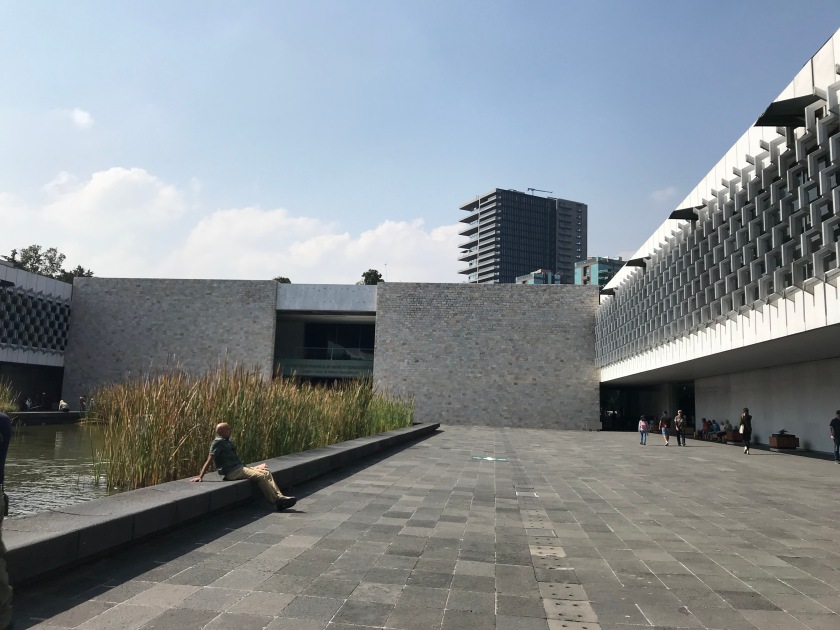
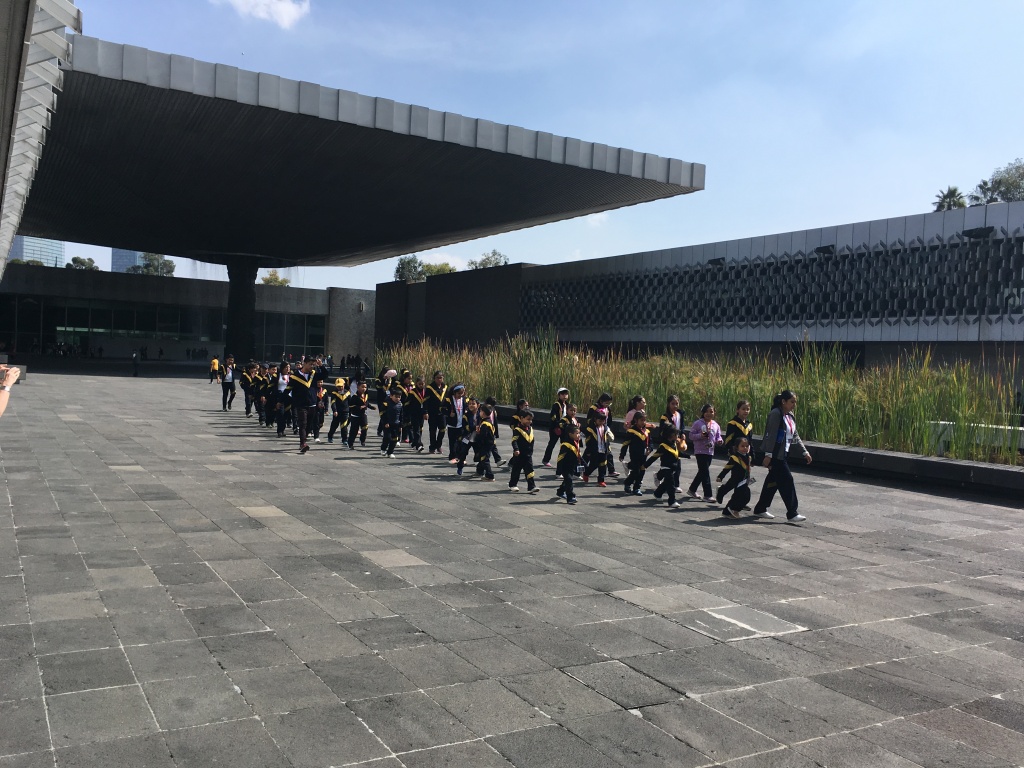
Our next stop is the National History Museum located in the Castillo de Chapultepec on top of the highest point in the park. Built in 1785 by Bernard de Galvez, the viceroy of New Spain at the time it served as the presidential residence for many years before being converted into a museum in 1944.
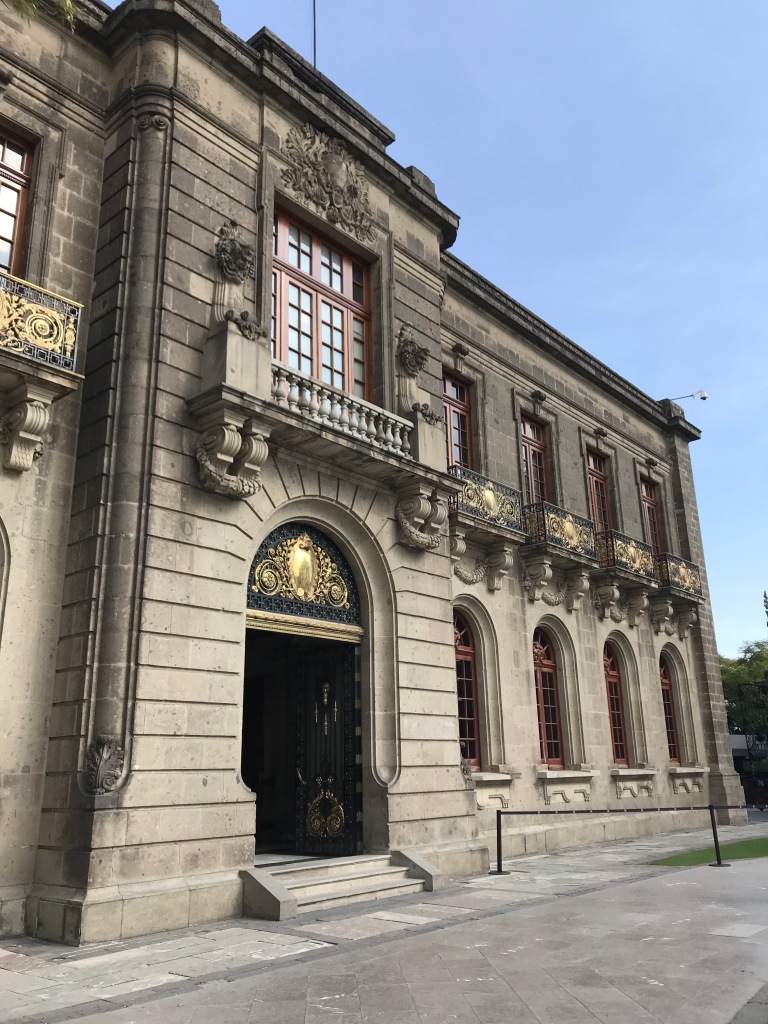
The castle is built in the neo classical style of architecture and sits amidst large well-tended grounds with amazing 360 degree views of Mexico City. The city is modern and enormous extending into the horizon in every direction.
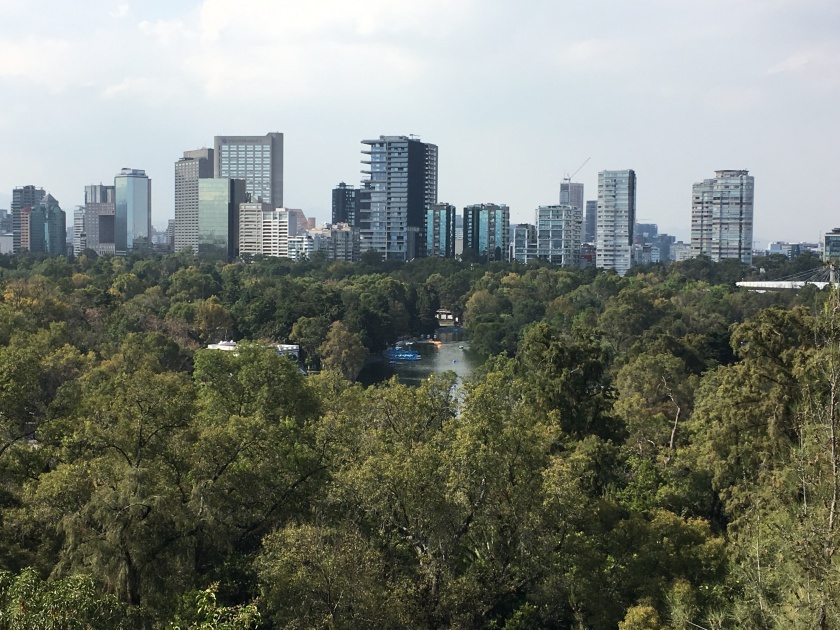
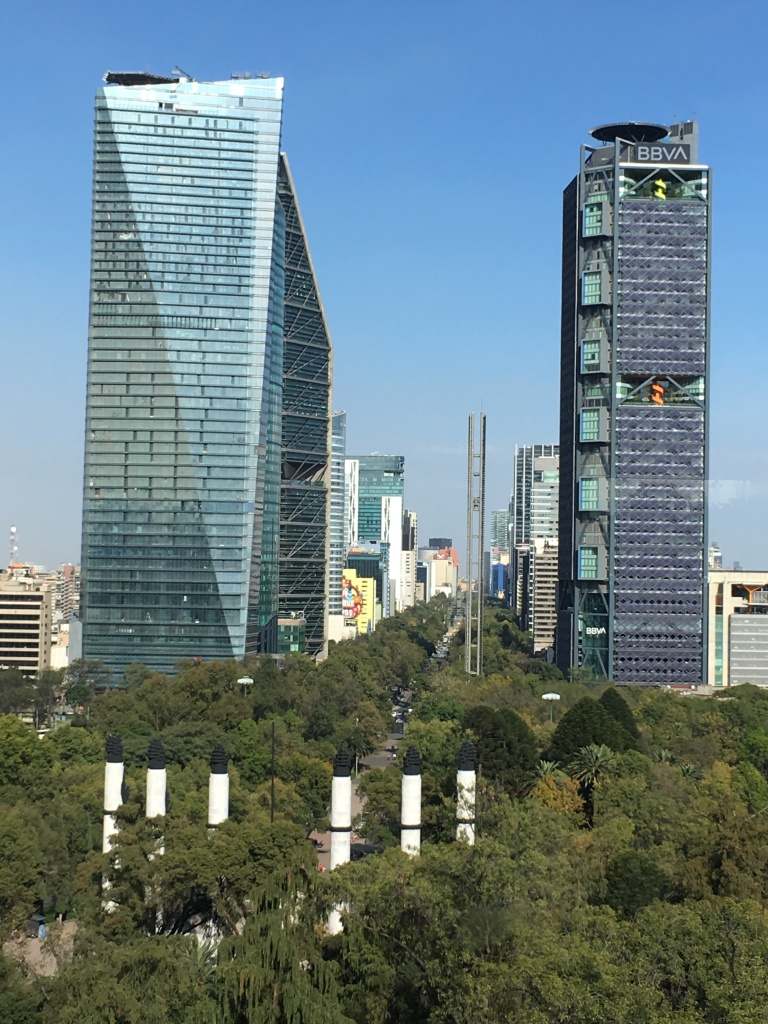
The castle itself houses paintings, murals by many famous artists of key historical figures in Mexico’s history. Walking through the castle one can imagine the lifestyle of the Spanish viceroys and Mexican presidents who lived there. The museum artfully presents the memory of a bygone era of Mexican aristocracy.
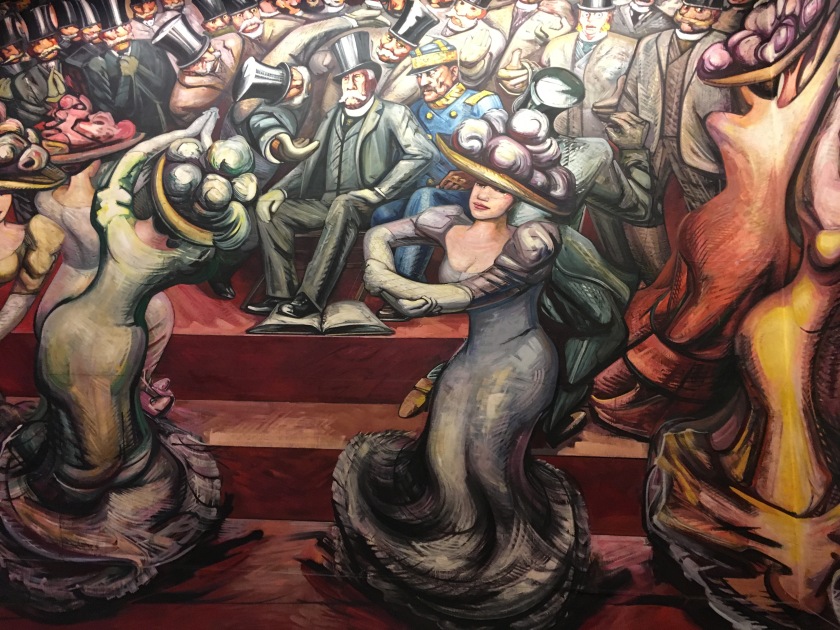
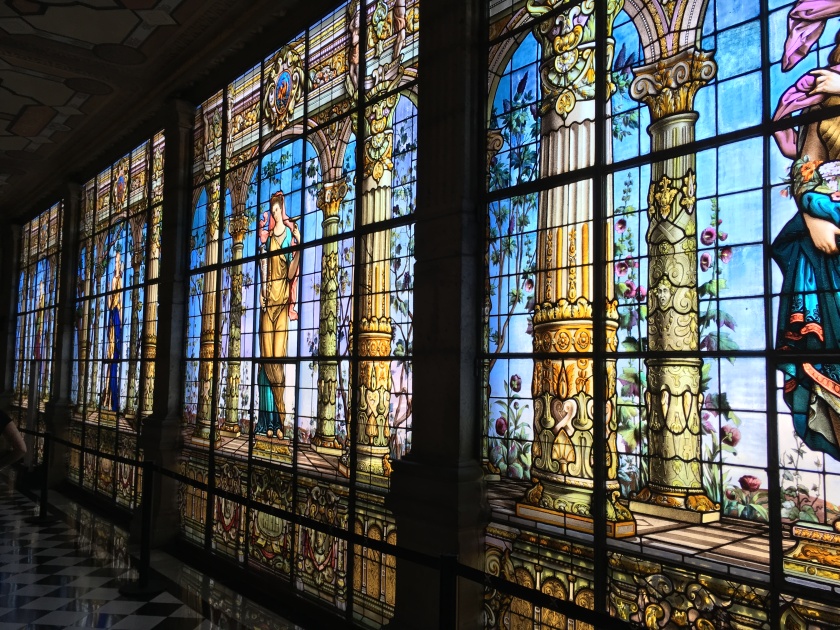
By now it is evening and we have skipped lunch completely. We have not visited any of the highly recommended cafes or restaurants in the neighborhood. We head to a neighborhood taqueria which is not on anybody’s list but has tacos and cold beer. La Zaranda Miraville on Avenida Plaza Villa Madrid is now on our list of comfortable friendly places to eat with good local craft brew and delicious seafood tacos.
Day 2: Centro Historico
Mexico City is built at the intersection of many ancient cultures and civilization. It lies in a valley at an elevation of 7,350 feet surrounded by mountain peaks, and was built on a shallow infilled lake by the Aztecs. That, in an inadequate nutshell is a description of the city’s origin. At the epicenter of the city is Centro Historico with many magnificent buildings built by the Spaniards over ruins of Aztec buildings. The main plaza is El Zocalo and is the destination we are heading to today.
But before that we walk to Panaderia Rosetta, a café bakery on our “list”. It is a short walk from our hotel and as we approach the café, we see a line of people waiting at the entrance. Waiting in line for food, especially on vacation, is distasteful and I resist the urge to walk on; I have still to make a dent on our “must visit” restaurant list. The line moves forward at an excruciatingly slow pace, within which time I have changed my mind about a few dozen times on what I would like to eat. We finally reach the front of the line and we order Croissant con espinacas y ricotta (spinach and ricotta) for me and Croissant con guayaba y queso (Guava and cheese) for Sunil. I would like to say that the food was worth the wait, but it was not; it was good and you can have good food in many places without waiting in line for 20 minutes. On the plus side, we did check off one restaurant from our list.
We Uber the 3 miles to Zocalo which takes about 30 minutes because of the traffic, and we abandon the ride about a mile from the square deciding that it would be faster to leg it the last mile. This turns out to be a great decision as we serendipitously walk into a busy pedestrian street (Madero Street) flanked by many beautiful old buildings including the House of Tiles building, and the Iglesia del Coventono de San Francisco . The church complex and monastery was one of the largest and most influential in Mexico City. The buildings that remain are still very impressive and picturesque.
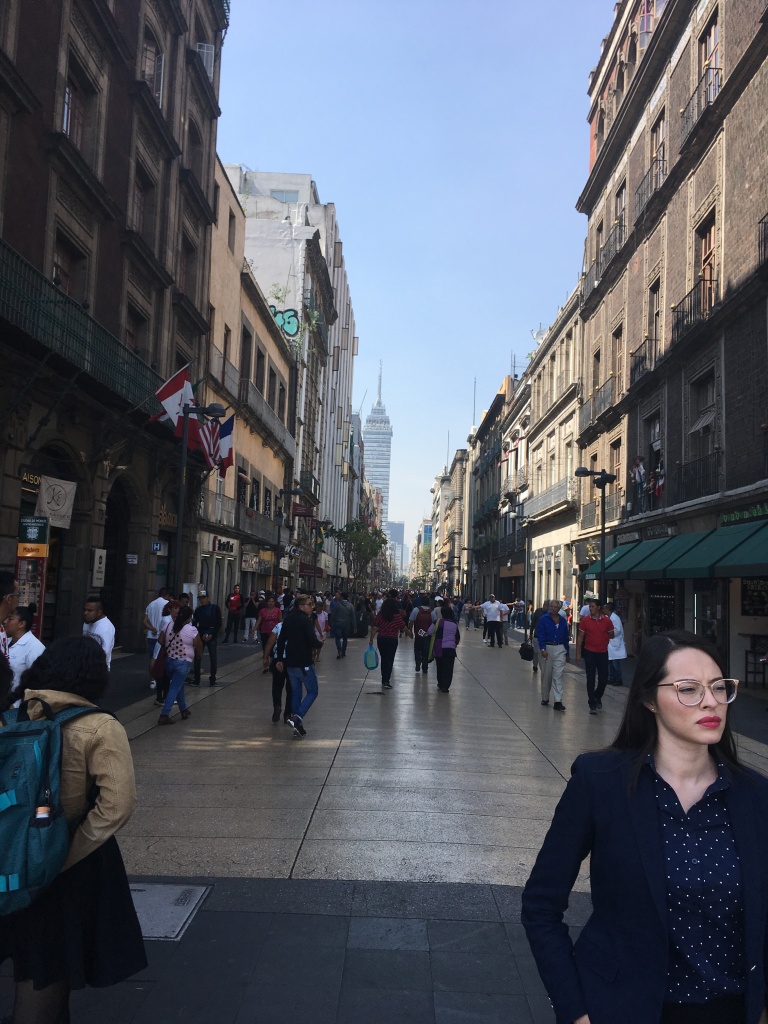
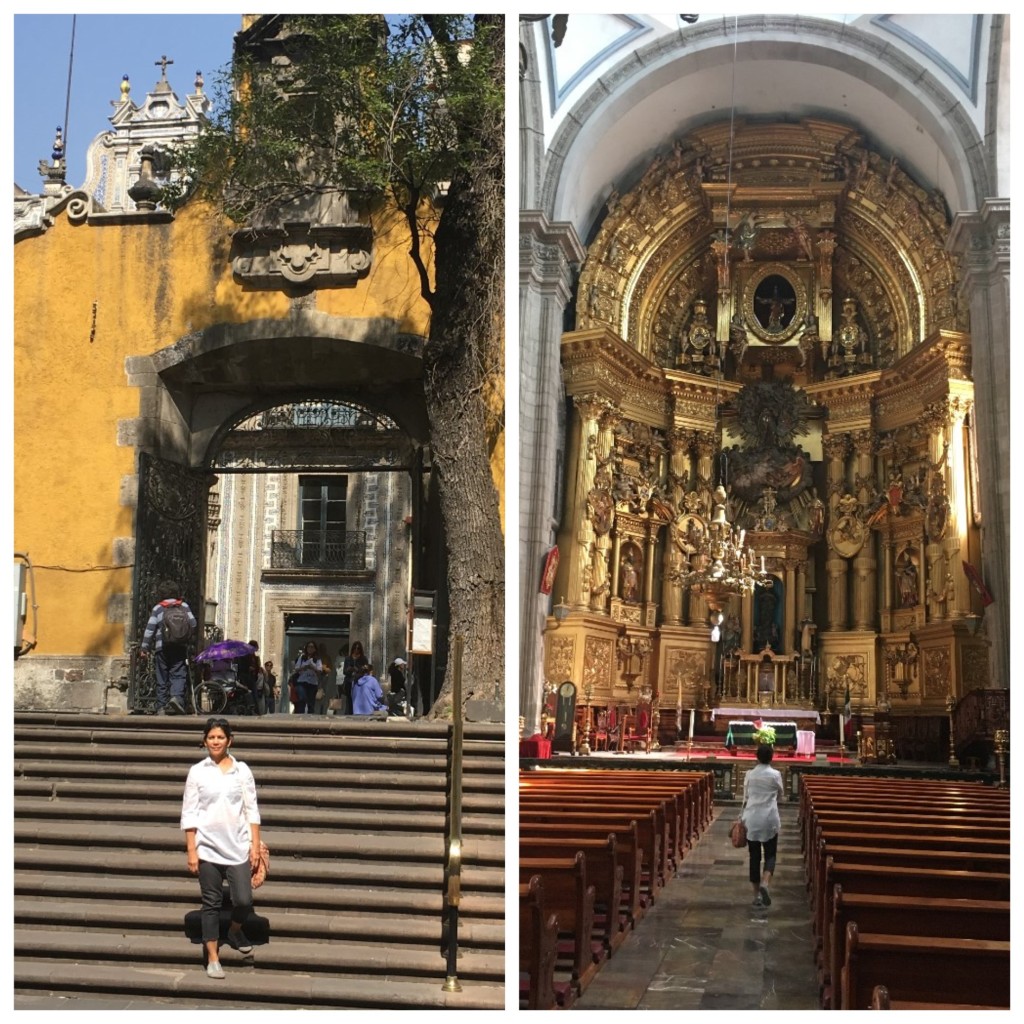
In the plaza we engage the services of Maria, a local guide who briefs us on the history of the Catedral Metropolitana which was built on the ancient Aztec site of the Templo Mayor. Maria is a gentle soft spoken lady, and we walk easily through the old church as she describes the 14 chapels in the east and west naves, the two pipe organs, and the spectacular Altar de los Reyes or Altar of the Kings built in Churrigueresque style and later gilded. The cathedral was built on solid foundation but it, like much of the city, has been sinking into the soft soil of the lake bed on which it has been built. In order to stabilize the cathedral, tunnels have been dug under the building and concrete piers built to level the structure. This underground space holds many thousand crypts of local citizens as well as other religious figures, particularly Mexico’s former Archbishops.
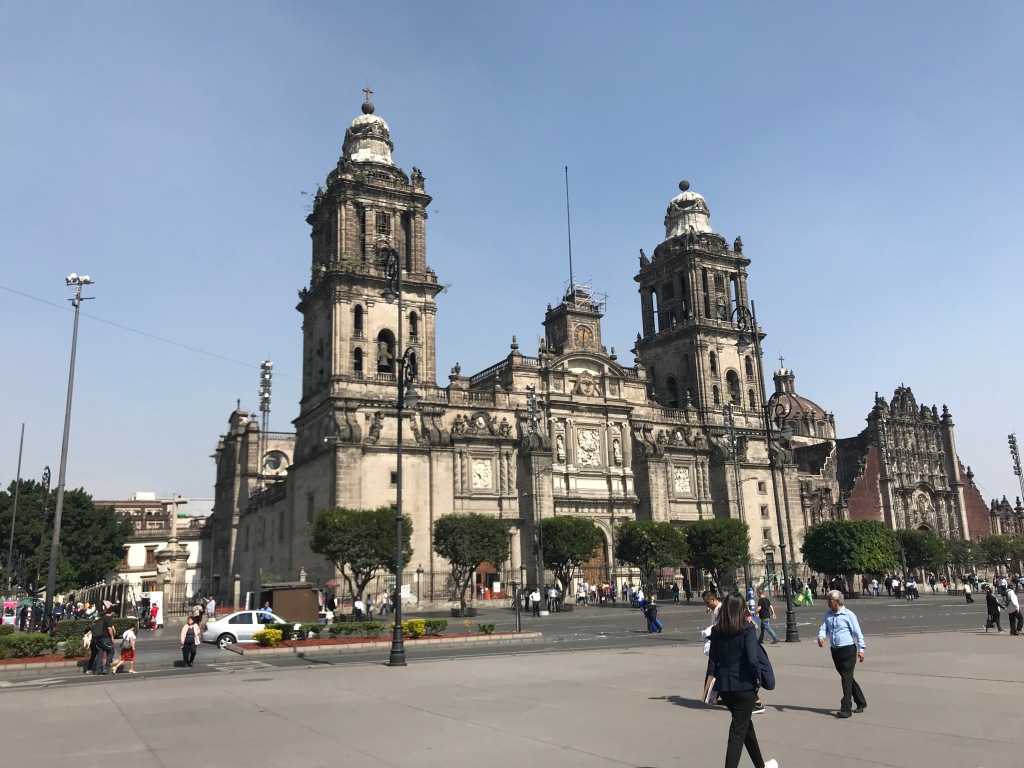
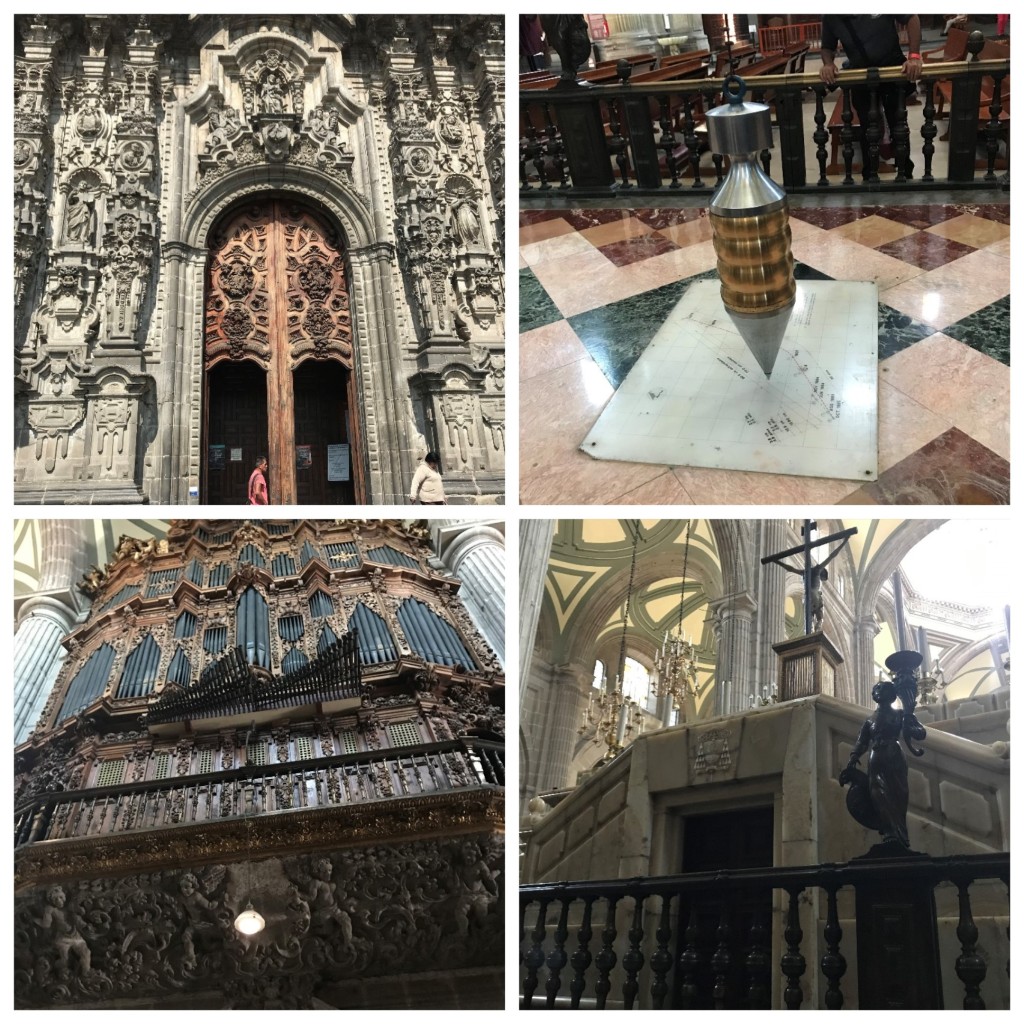
We walk outside and peer into glass covered openings in the plaza that expose ancient steps of the Aztec structure that still exists under the cathedral.
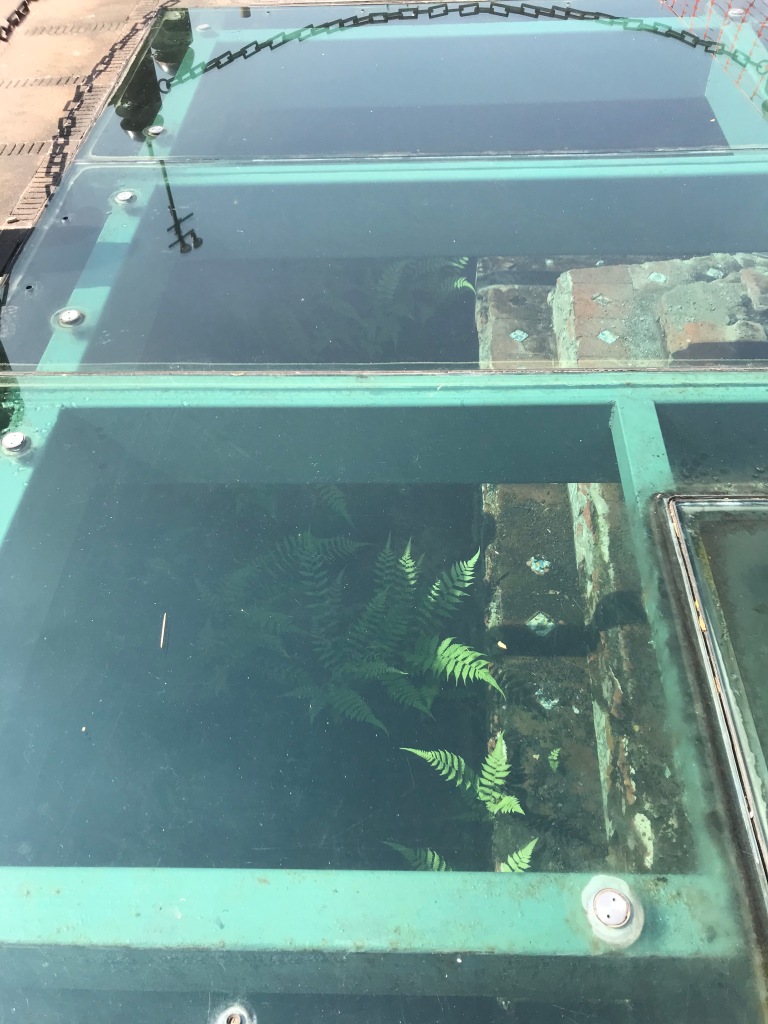
Our lunch stop is Restaurante El Cardenal one block west of Zocalo, an upscale restaurant serving traditional Mexican fare, that was recommended by several travel sites. Sunil’s Chile Relleno a la Oaxaqueña is a mouth watering mole covered pork stuffed Poblano pepper in the Oaxaca style. My entree is a simple but delicious Filete de Pescado. The restaurant occupies several floors in the building and even at this late hour, it is fairly brimming with people. It has an old world charm and the traditional fare has earned it popularity among residents and visitors alike. We are happy to report that the hype about El Cardenal is justified.
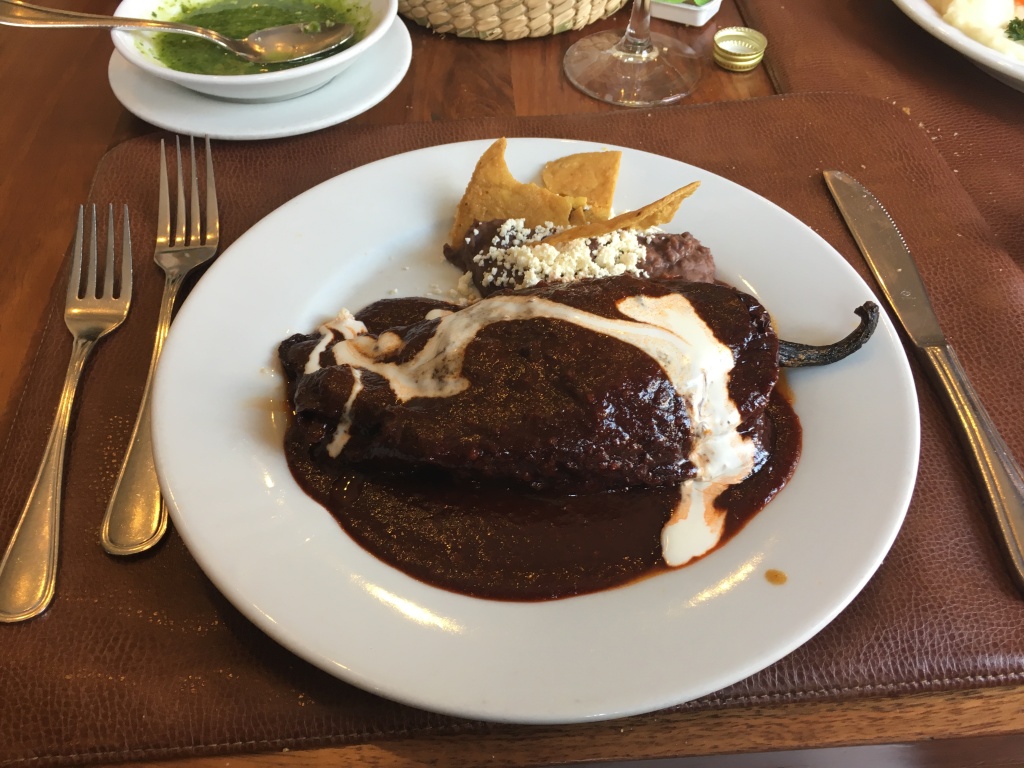
After lunch we head to the archaeological site of Templo Mayor. Templo Mayor, was the main temple in the Aztec capital of Tenochtitlán (now Mexico City). The spanish destroyed most of the pyramid during their conquest in the 16th century and later built several colonial structures over the area. The site was rediscovered in the 20th century and the overlying structures demolished. Artifacts found in the archaeological excavation are housed in the adjacent Templo Mayor Museum.
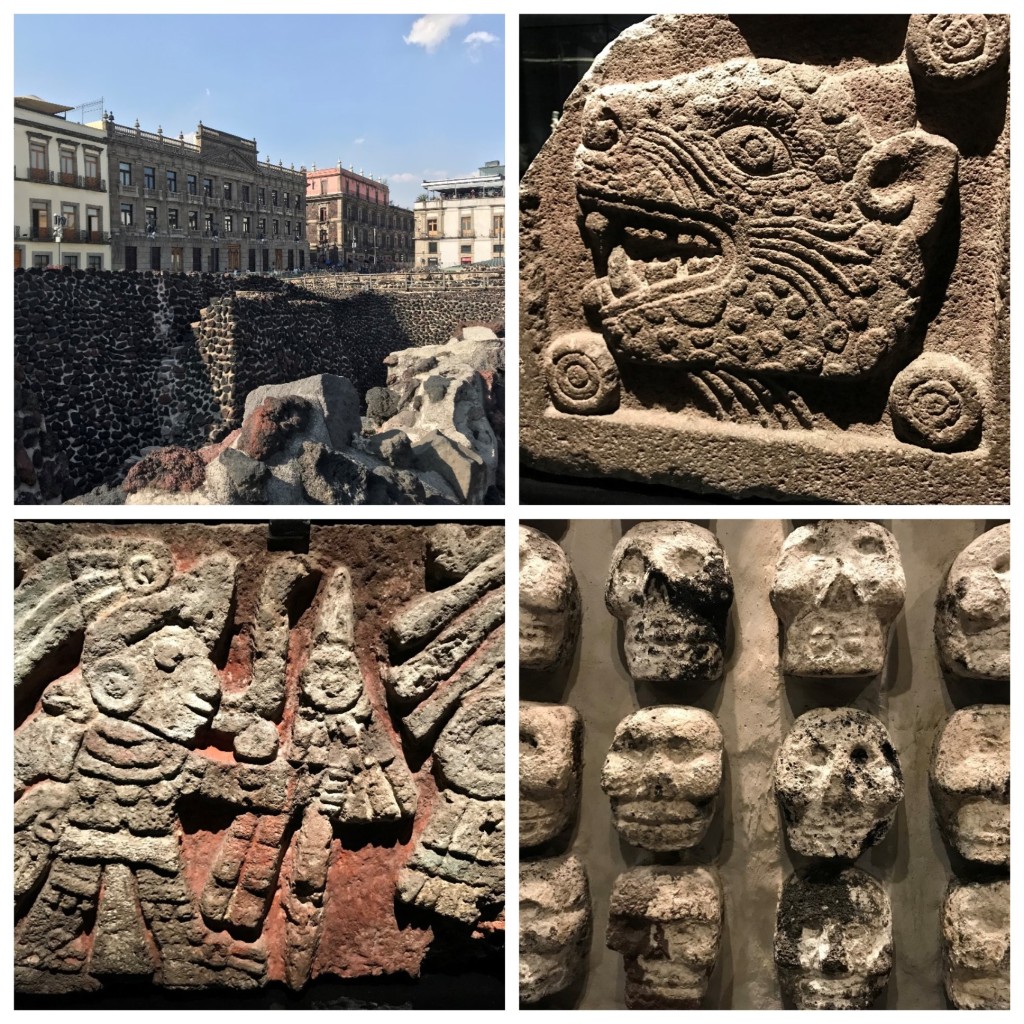
The remainder of the day is spent browsing through neighborhood shops, and people watching at the Sanborns restaurant over coffee and dessert. The restaurant is located in the courtyard of the beautiful House of Tiles (Casa de los Azulejos). The building was built by and was the residence of the Count of the Valle de Orizaba family who,at some point in the 16th century, decorated the façade of the building with blue and white tiles from Puebla.
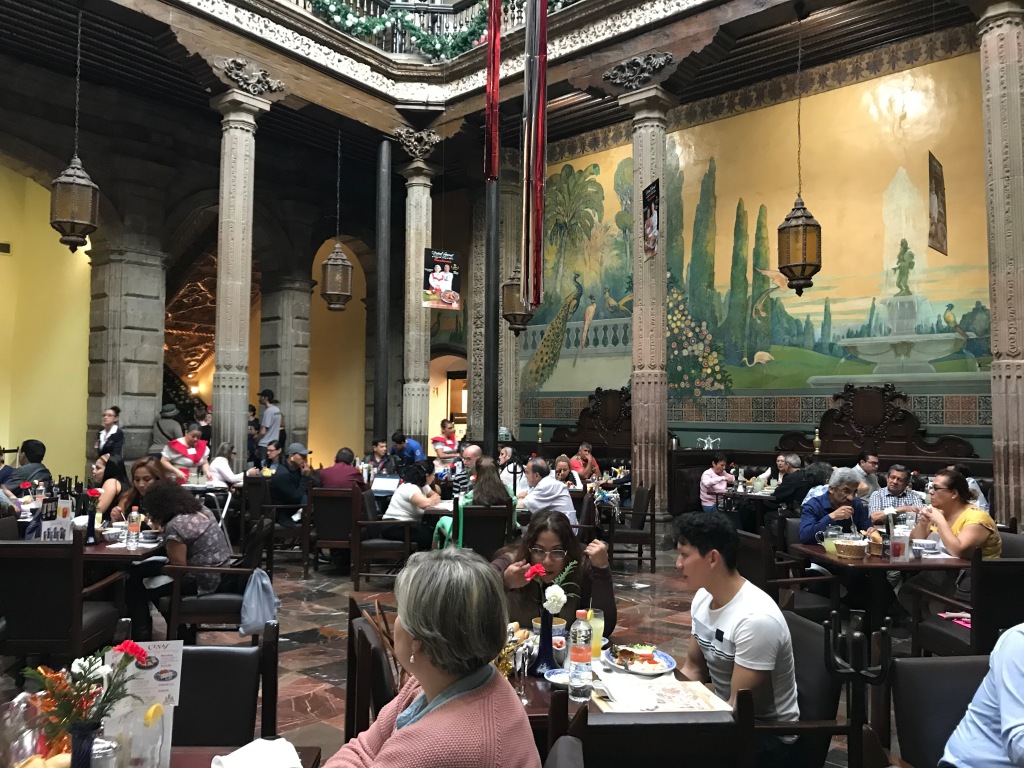
Our trip back to the hotel in the rush hour traffic is not too bad, as we sit back and watch people headed home in all directions in this busy city.
Day 3: San Angel and Coyoacán
Except for the little incident in our Uber which caused a lemon sized bump in my head, and front and back end damage to the car, our trip to San Angel would have been pleasant and unremarkable. Our destination for the day is San Angel and the Frida Kahlo Museum in Coyacan. For breakfast we pick the San Angel Inn. Imagine a quiet elegant neighborhood restaurant with a shaded courtyard, and waiters in crisp white uniforms quietly serving up the days menu in hushed tones to tables of well dressed business folks transacting with other well dressed business folks. If you imagine something stuffy and pretentious, it would be far from reality. It is the kind of comfortable classy place you would take mom to for Mother’s day brunch. The restaurant does not disappoint, and well breakfasted, we cross the street over to the Diego Rivera and Frida Kahlo House Studio Museum.
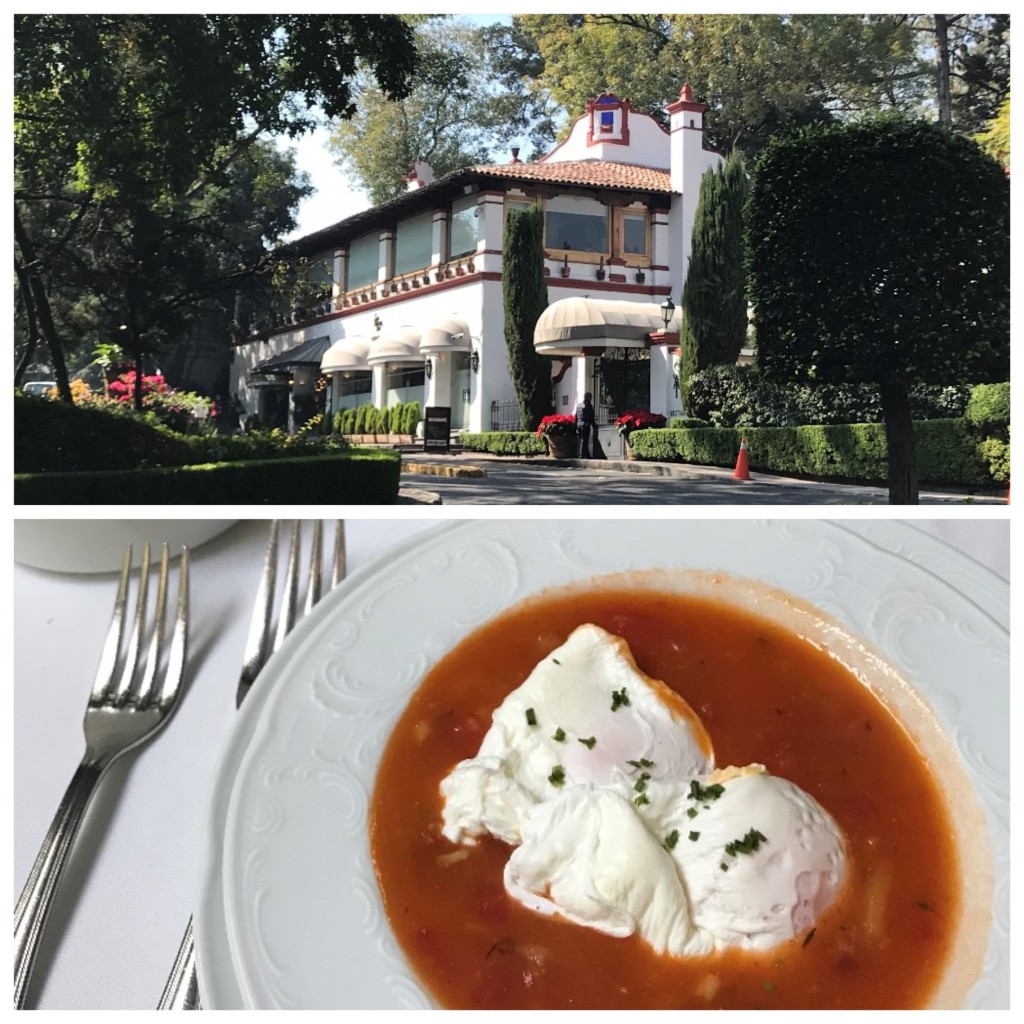
This compound contains the twin houses of Frida Kahlo and her husband Diego Rivera connected by an elevated bridge. The houses were designed by famous Mexican artist and architect Juan O’Gorman and is surprisingly modern and airy with several works of art by the two famous artists. The houses have multiple levels connected by steep winding staircases. Another house designed and built by Juan O’Gorman occupies an adjacent lot. While, I find the houses interesting, I wonder about the steep staircases Frida must have had to navigate with all her disabilities.
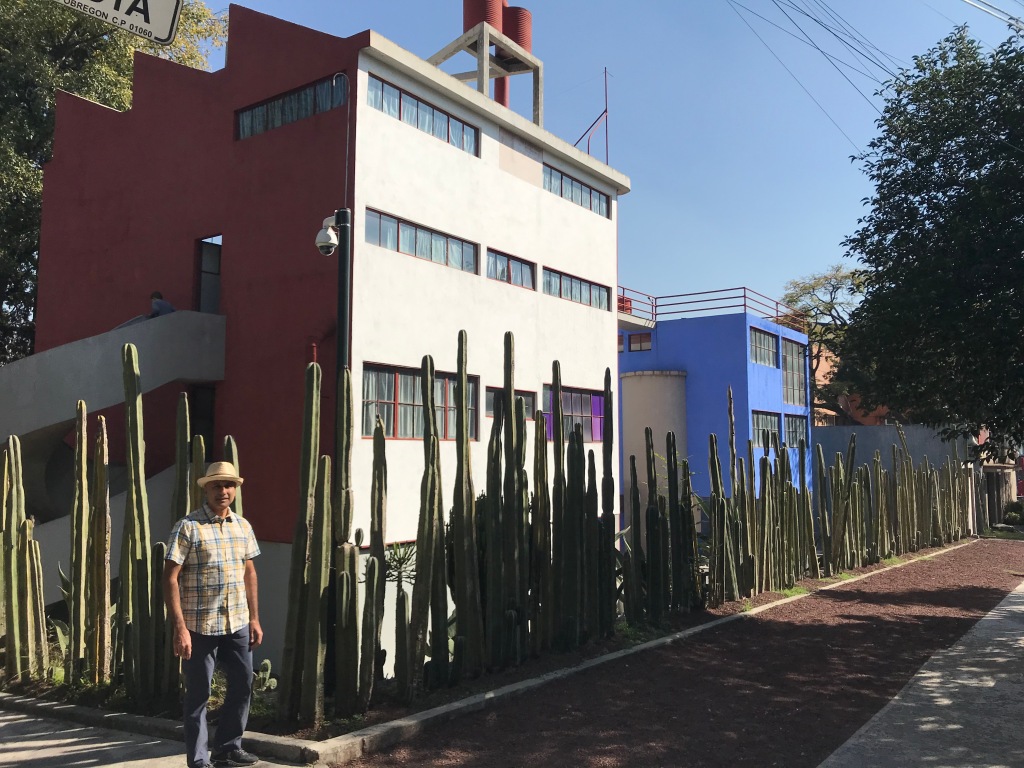
We walk through the narrow cobbled streets of San Angel with charming old homes behind whitewashed walls. A short ride away is Coyoacan and Frida Kahlo museum. We are early for our allotted time so we walk to the neighborhood market where stalls selling food, handicrafts, household goods and sundries vibrantly display their wares. The place is bustling with people. We stop to have a cold Coca Cola from a food stall.
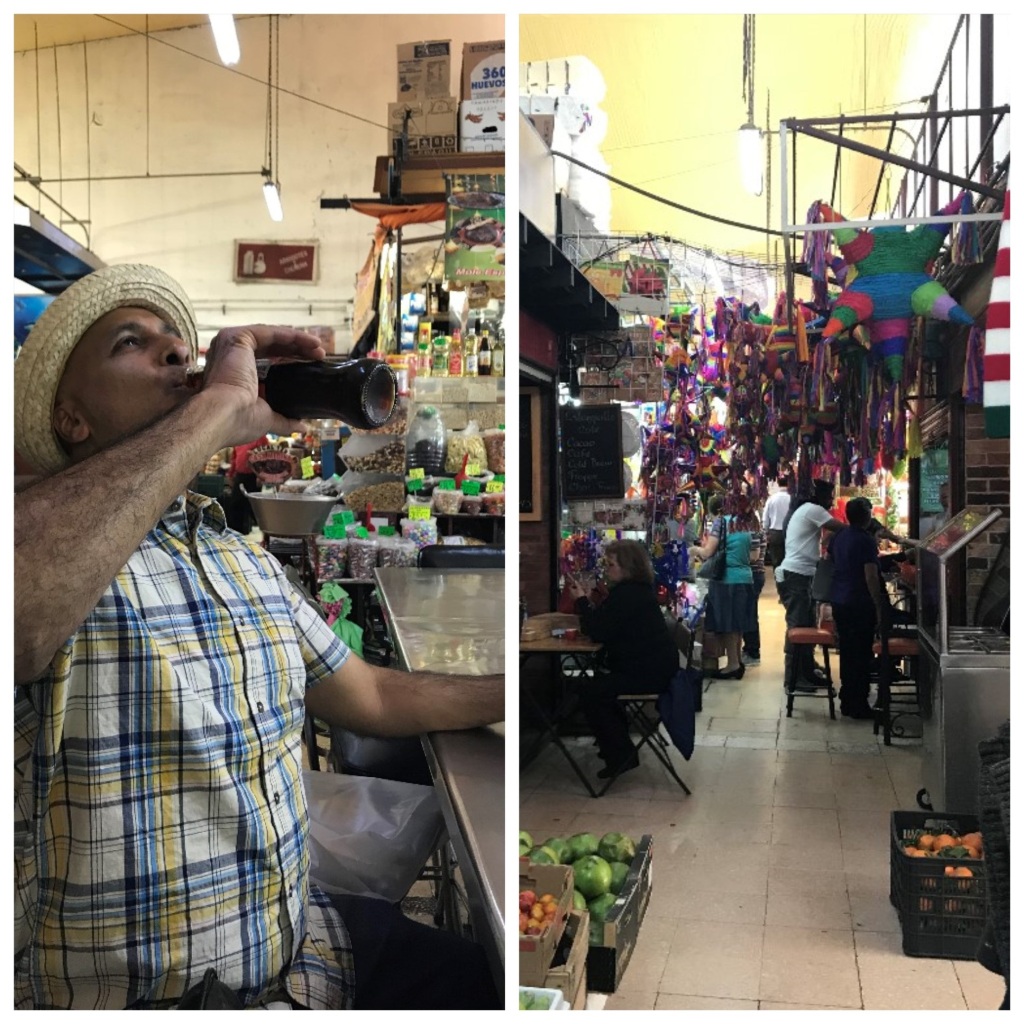
The Frido Kahlo’s home, now turned museum, called the Casa Azul is unmistakable with its deep blue color. There is long line of people on both sides of the entrance. We have planned ahead and bought our tickets online but all that really means is that you get to stand in a separate line waiting to enter the museum. Ahead of us in line, is a group of well dressed older ladies from Guadalajara who wear head bands of ribbon flowers and carry Frida Kahlo tote bags; quite the fan club. They appear to be having a great time as they pose for selfies and group photos. Their excitement is palpable in their banter and their enthusiasm as they wait for the doors to open.
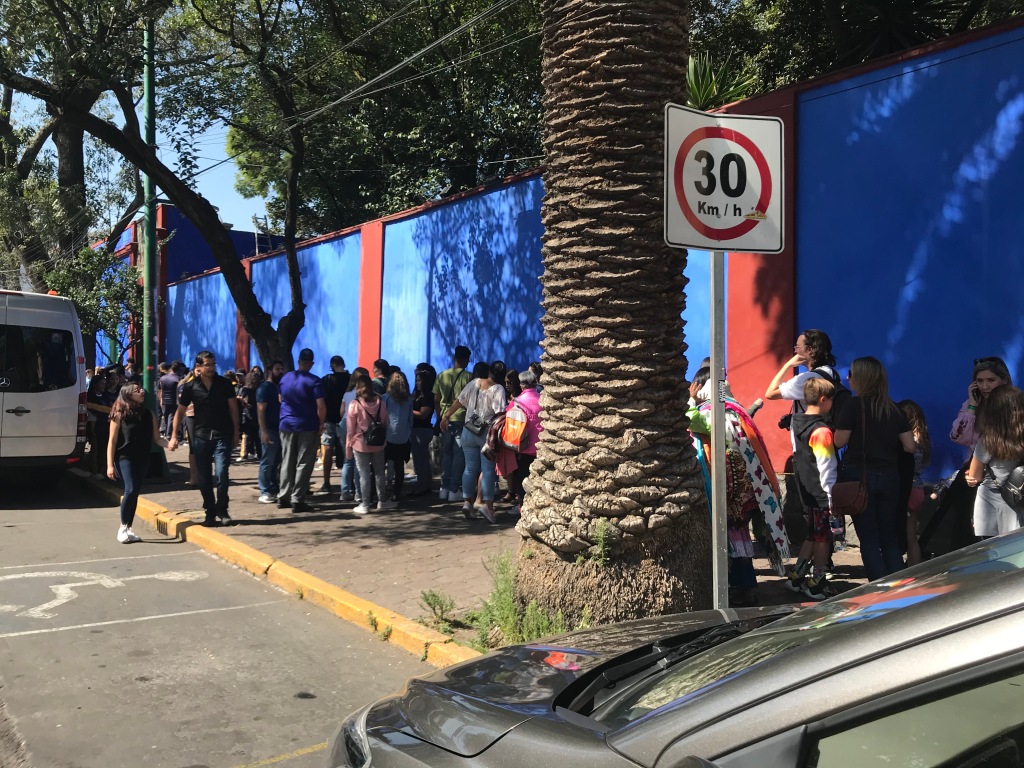
Once inside, we find the place packed with visitors. We shuffle our way through the various rooms in the house, sometimes waiting long minutes to enter some of the smaller rooms and barely spending a few minutes on the exhibits due to the press of people behind us. While Casa Azul is very nice and quite large – it simply does not have adequate room for the increasing number of tourists that want to visit. At the end of our visit, I am disappointed and feel the visit is not worth the time spent. I am told that all good things are worth waiting for, but what if after waiting you find it’s not a good thing?
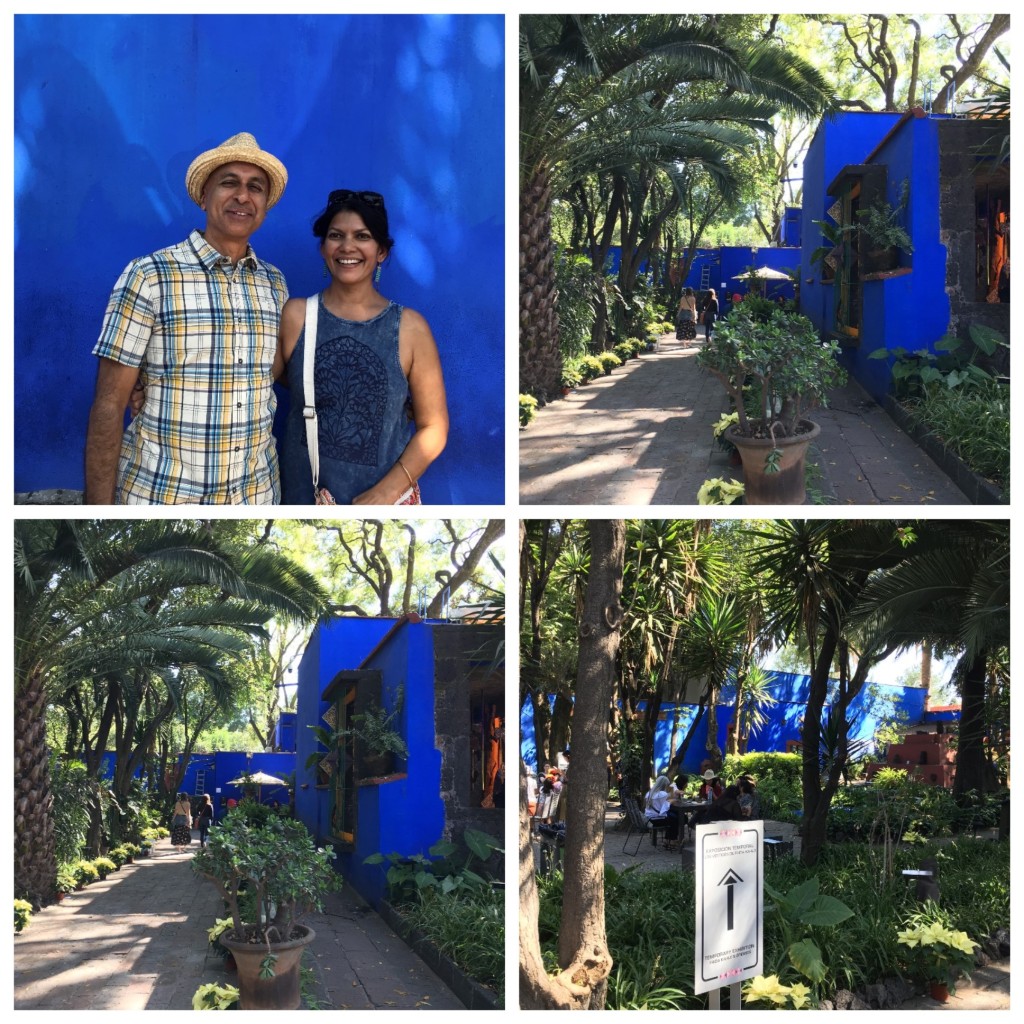
Our next stop is the Plaza Mercado and dinner at Corazón de Maguey, one of only a few offering traditional fare. Guacamole with crunchy fried and salted grasshoppers makes for an adventurous appetizer for Sunil but not for me. The entrees are delicious and the craft brew excellent. Another restaurant from our list lives up to its hype.
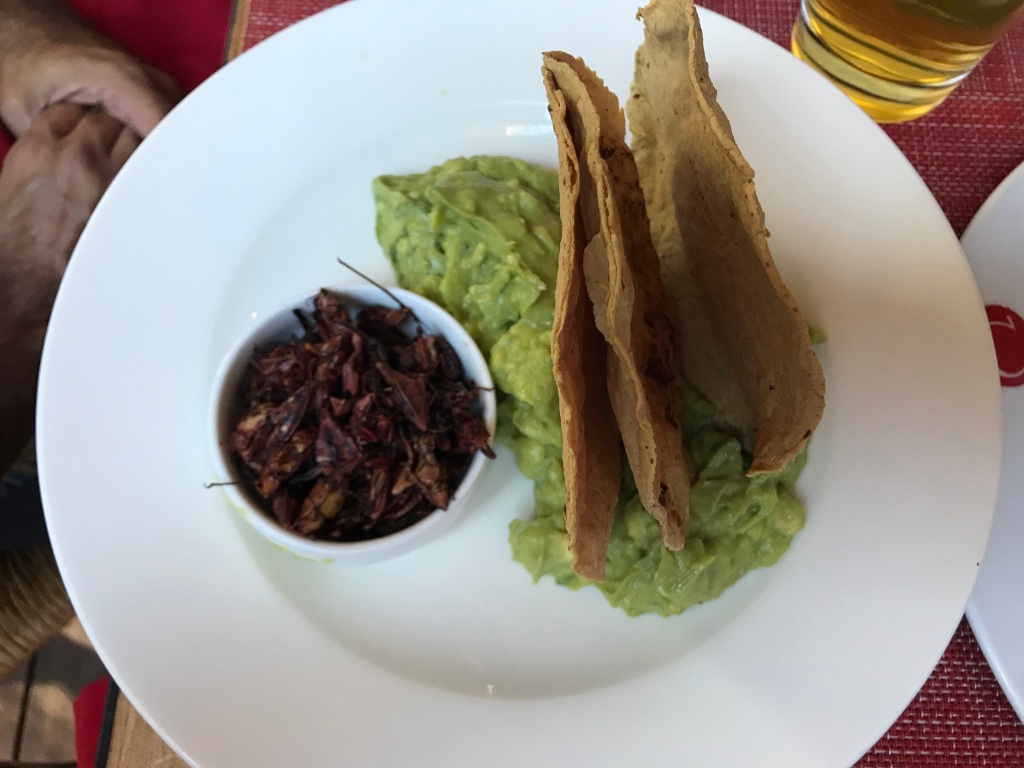
Day 4: Teotihuacan
This is our last full day in Mexico, and we have a day trip planned with Estacio Mexico Free Tours. Our tour starts at the grand Palacio de Bellas Artes, a museum of art, architecture and culture of Mexico. The museum was built in the 20th century but soil issues and the Mexican revolution halted construction and it took several decades to build. The building has sunk several meters into the city’s soft soil, and this is apparent from the steps at the exterior of the building. The building appears magnificent, the large dome glitters as the morning sun rises over the square. We are early and greet Vladimir our young local Mexican guide. We take a tram ride to the North Bus terminal where buses take you to destinations to the north of the city. There are similar bus terminals for S, W and E destinations in other areas of the city.
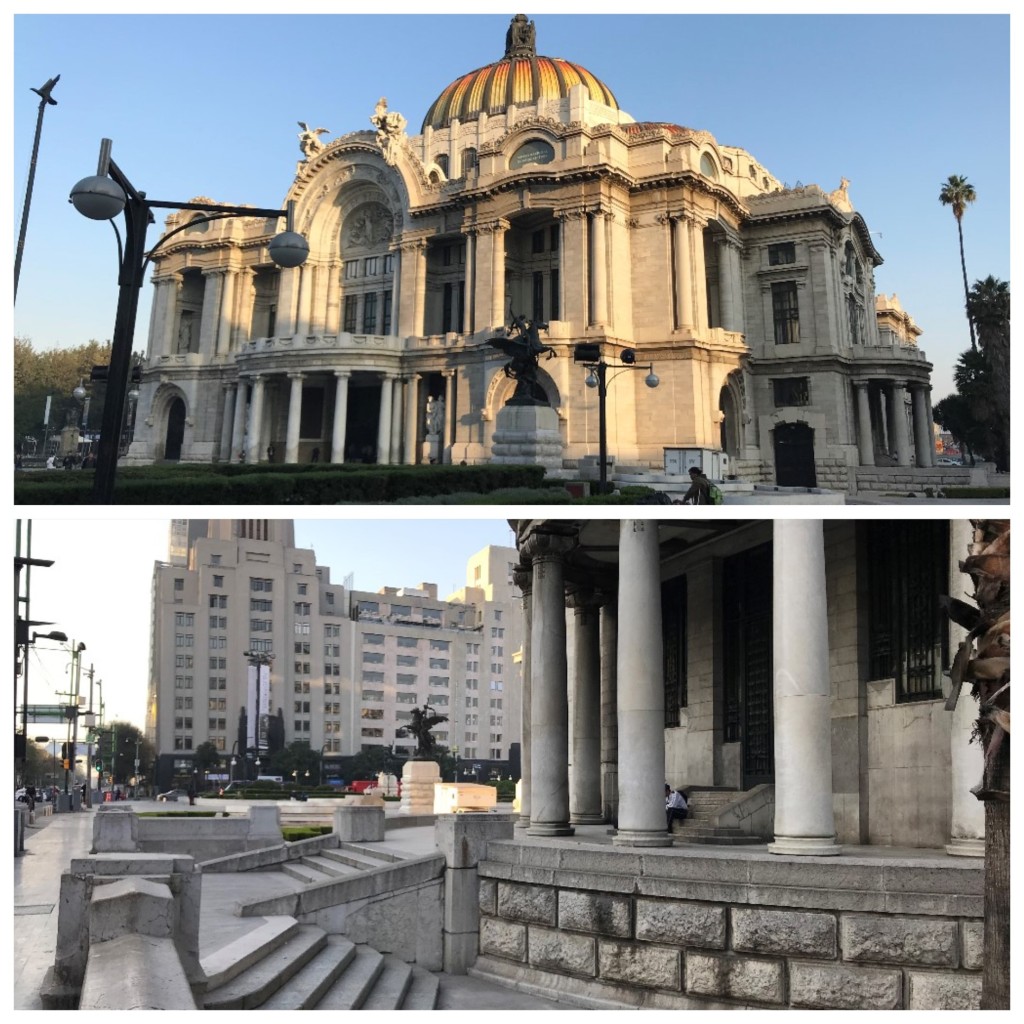
Our trip is well timed as we have less than a 20-minute wait to catch our bus ride to Teotihuacan. The terminal is large and modern, with clean facilities. There are food courts, and shops selling snacks and drinks. The 45 minute bus ride is comfortable and takes us through some northern neighborhoods. The suburbs are endless and we get a sense of the scale of the metropolis. A dense cluster of houses blanket over the hillsides spreading far into the distance before we reach open countryside.
Teotihuacan is in a valley and was once a large population center of religious and economic importance in pre-columbian Americas. This is a designated world heritage UNESCO site and it is immense with many structures lining the main axis (Calzado de los Muertos). The main pyramidal structures are the Pyramid of the Sun, Pyramid of the Moon and the temple of the feathered serpant. We climb to the top of each of the pyramids which is challenging due to the steep steps.
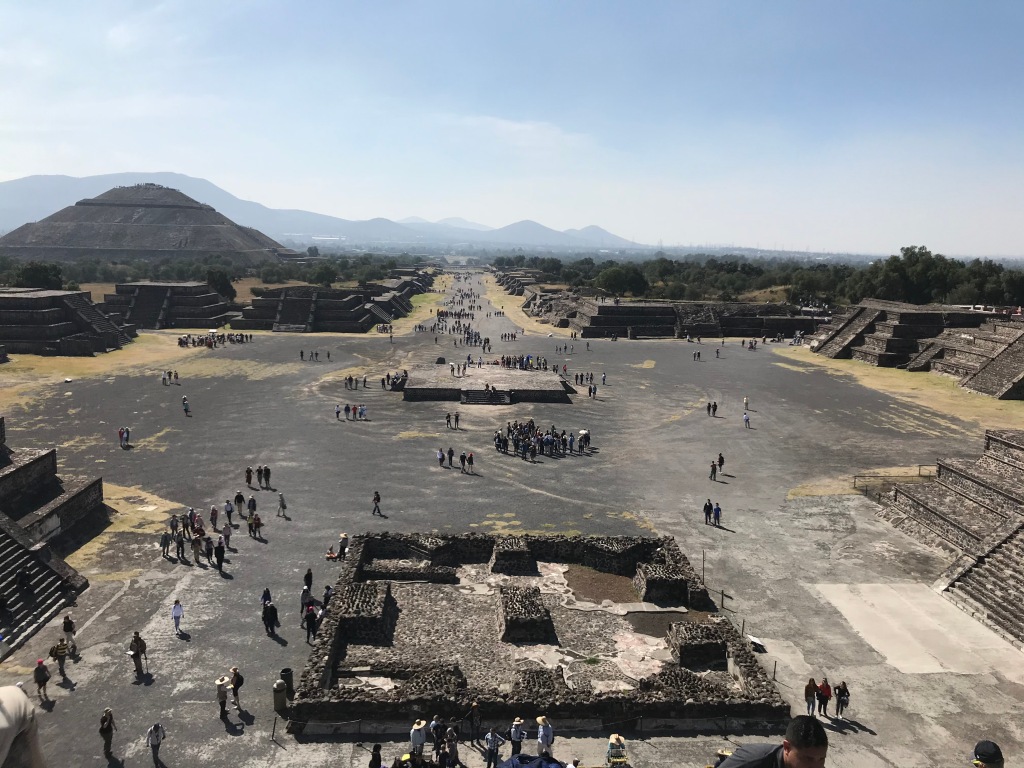
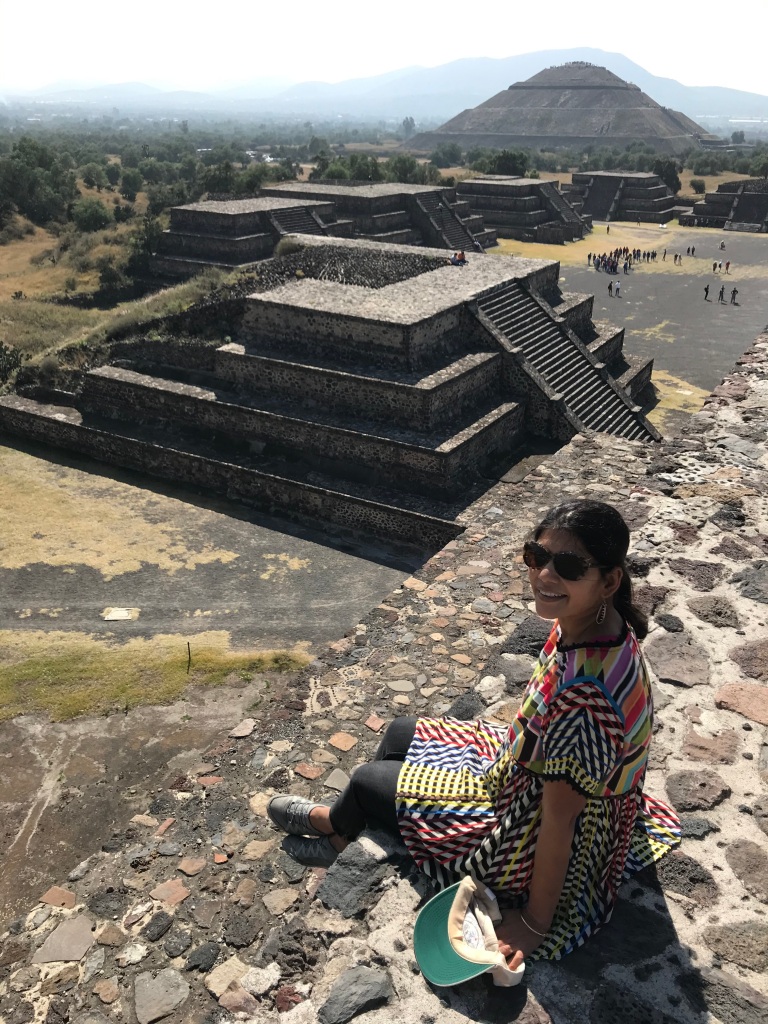
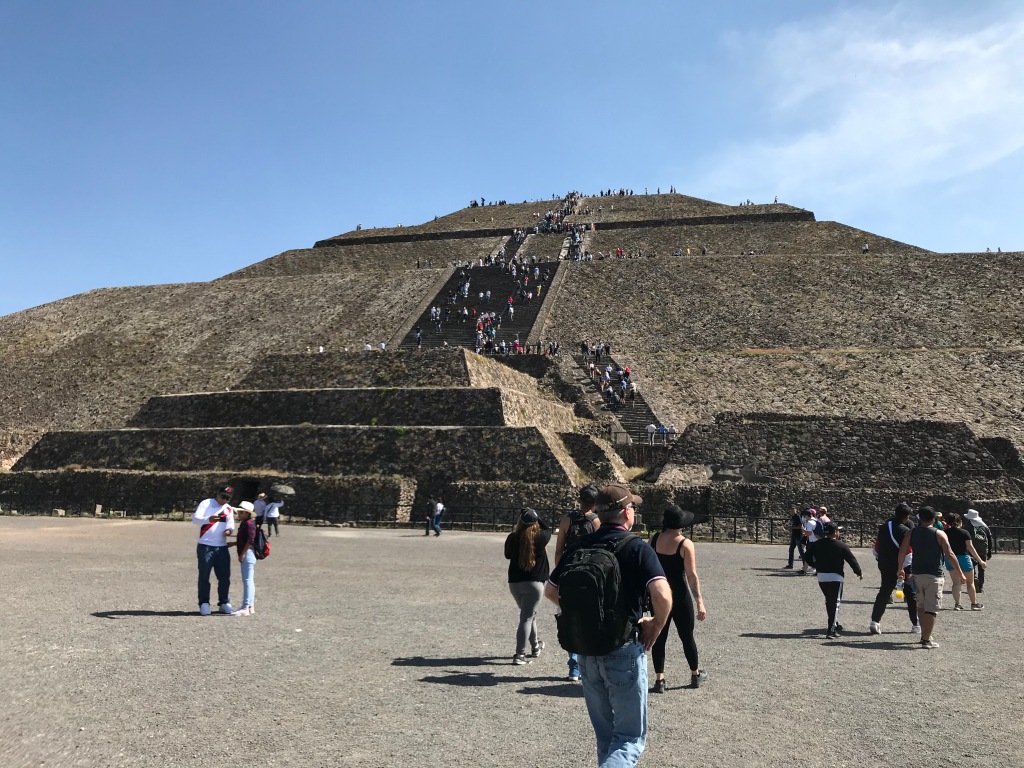
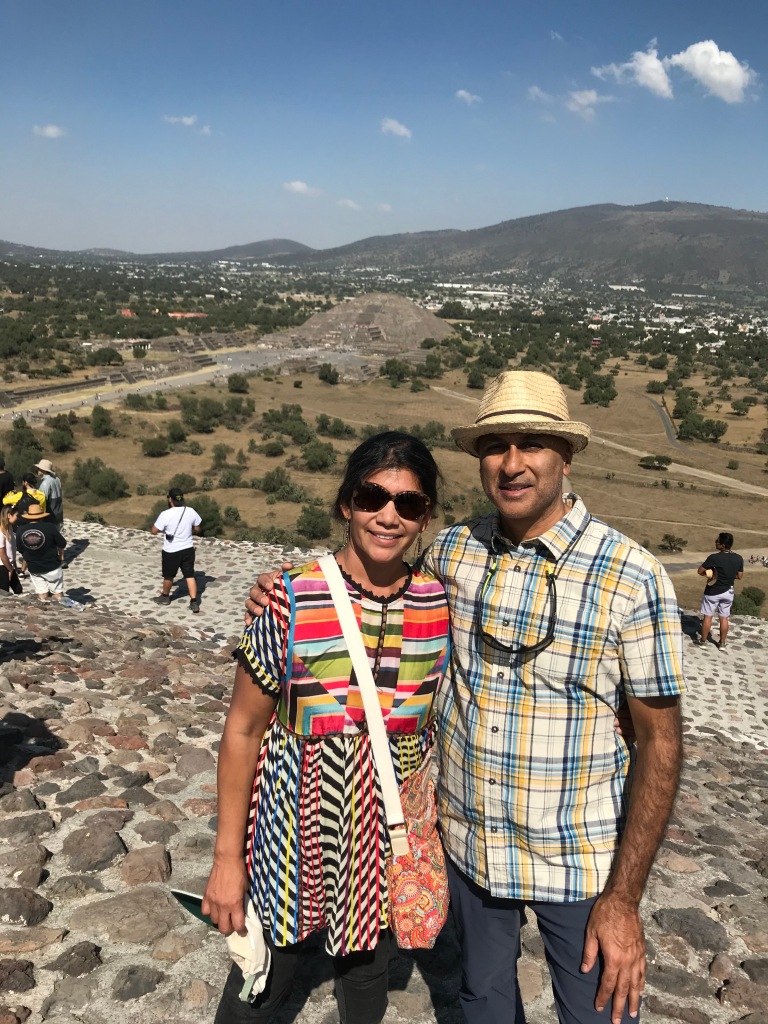
Vladimir is knowledgeable and maintains a comfortable pace throughout the day. The walk in the hot sun is tiring but we soon reach the end of the long Avenue where we head straight for some cool drinks and ice-cream, just in time as there is a little mutiny brewing in the ranks over the long hot walk.
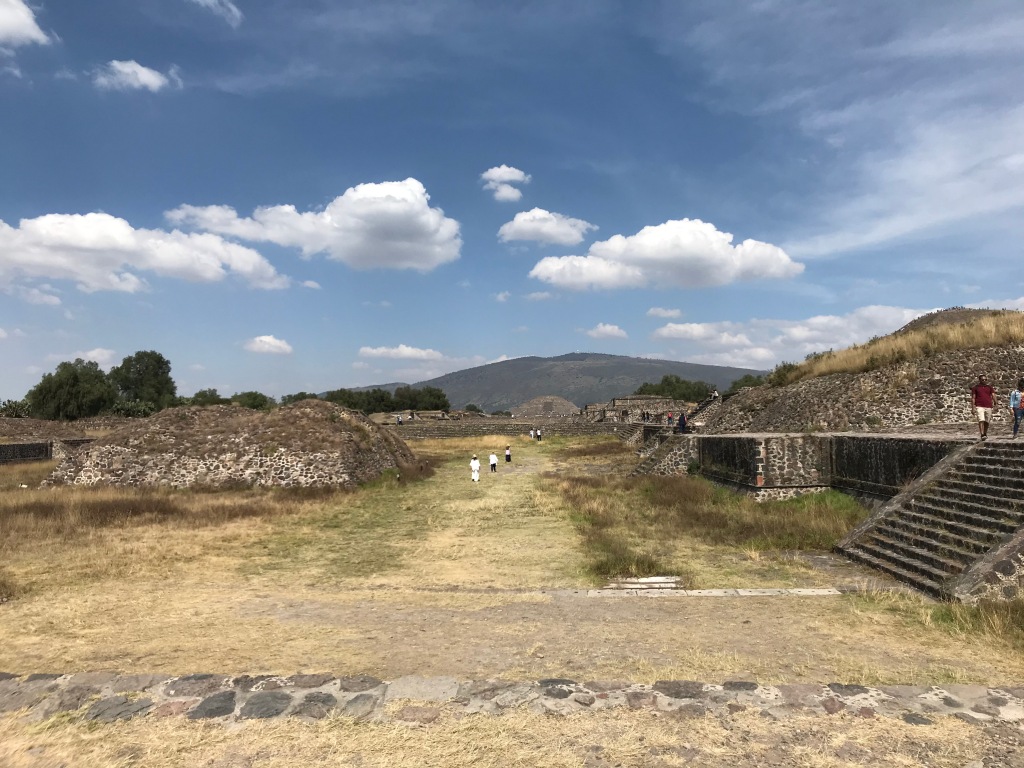
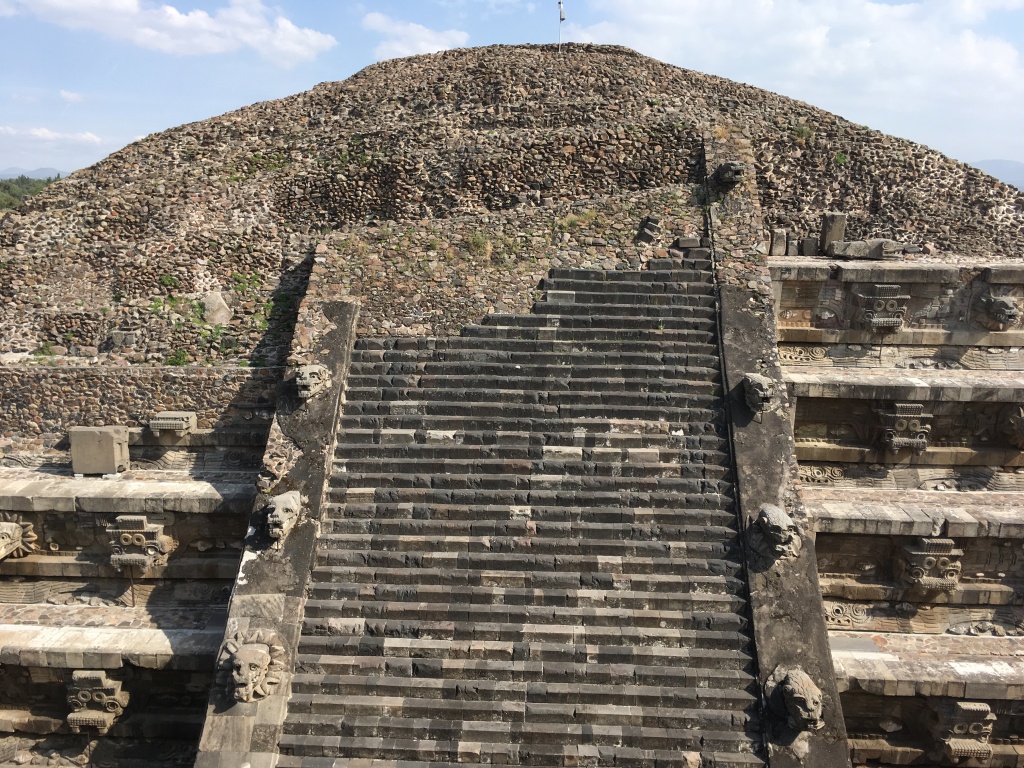
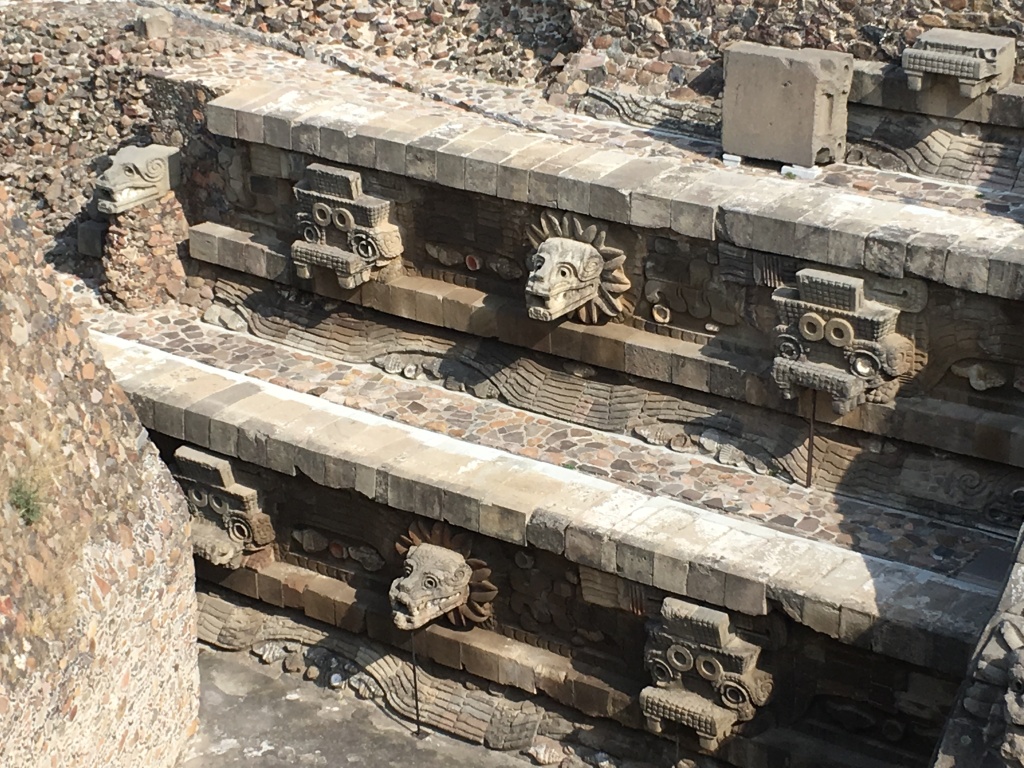
On our trip back we take the bus to a metro station. With all the many stories we have read about pick pockets in the metro system, we clutch our belongings close and glance suspiciously around us during the ride. Only uninterested commuters staring at their cell phones occupy our carriage. I am glad to have a seat for the short ride that takes us back to the City Center.
We eat tacos at a local taqueria and watch the busy Friday throng gathering in the street. Ordering here turns out to be fun. I let the waiter know I am vegetarian, and ask him to bring me something to eat. He must have understood me, as I am treated to the most delicious vegetable tacos of my trip. I would give them a 3 star Michelin rating if I was Mr. Michelin or whoever hands out Michelin stars.
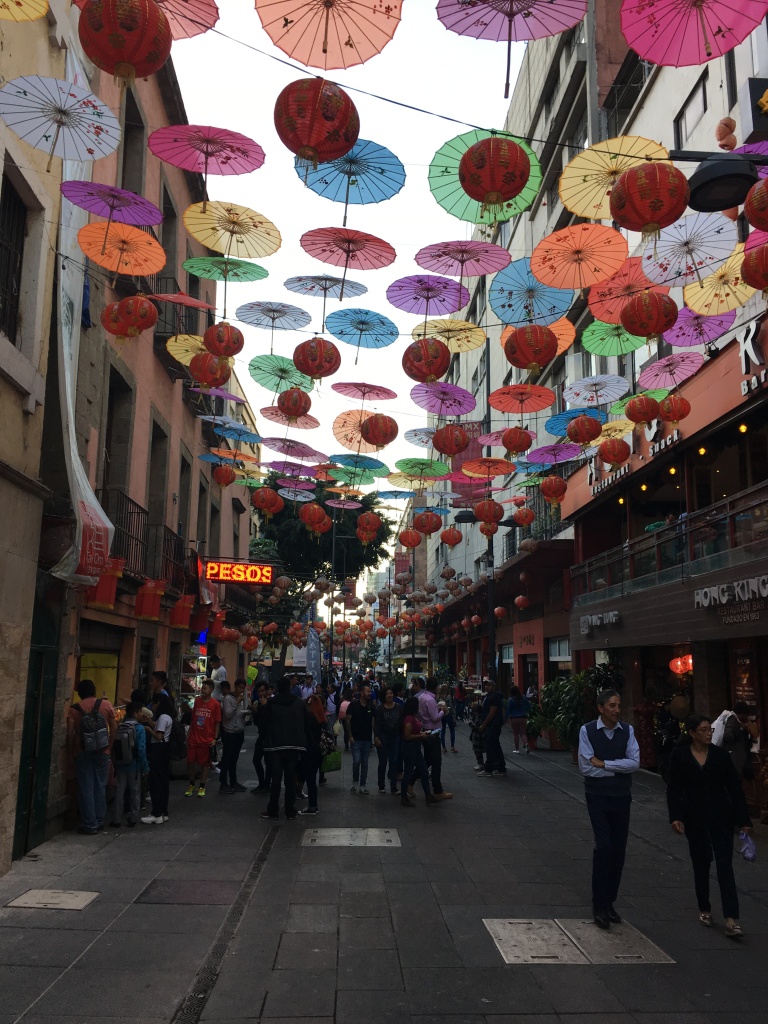
Next day we leave for Cozumel for some diving. To say that our visit to CDMX was amazing is an understatement. We have only scratched the surface of this historic city with all its layers. There is so much more we have not experienced, so much that we have not tasted, and so much that we have not seen. Four days is barely enough to give us a brief glimpse into this complex city. We are glad to have made it without incidence (i.e. with our underpants in tact). While some of the security warnings maybe justified, this city is no different than most big cities around the globe. The city is warm and welcoming. A little Spanish goes a long way and your smile is always returned.

Very well written, informative and entertaining. You should become a travel writer!
LikeLike